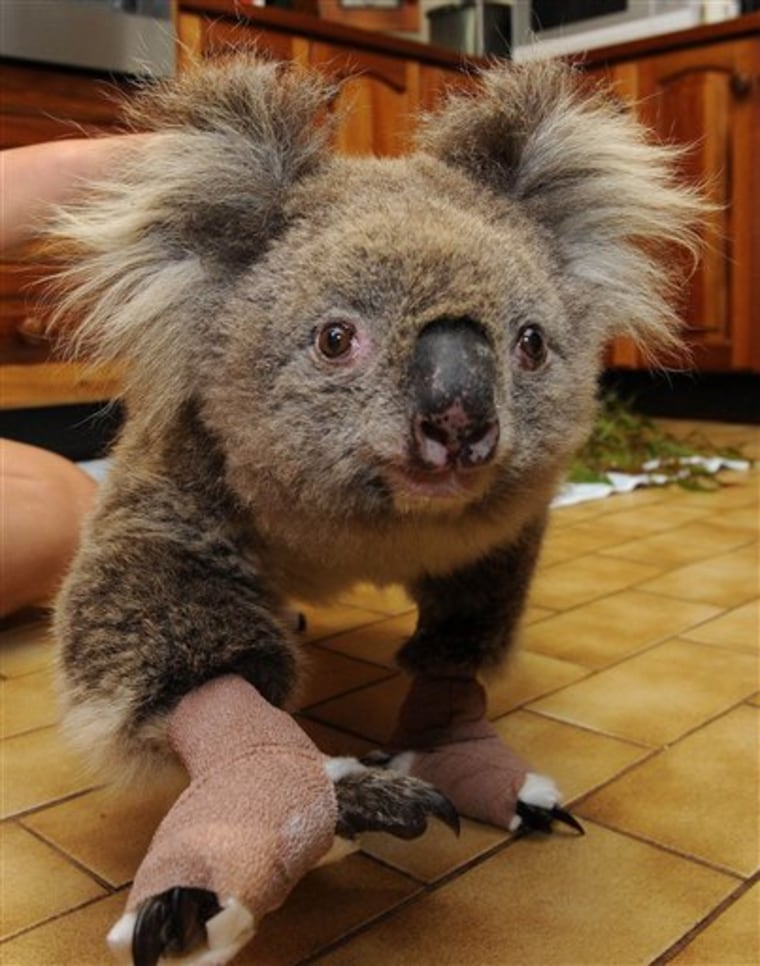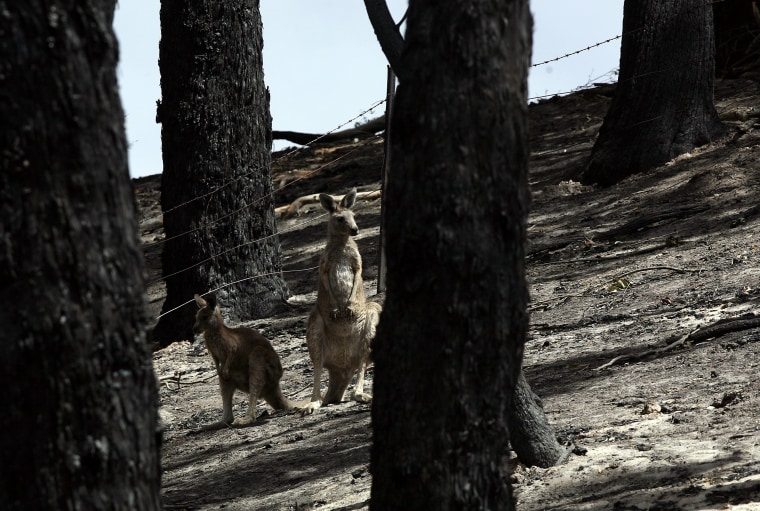Kangaroo corpses lay scattered by the roadsides while wombats that survived the wildfire's onslaught emerged from their underground burrows to find blackened earth and nothing to eat.
Wildlife rescue officials on Wednesday worked frantically to help the animals that made it through Australia's worst-ever wildfires but they said millions of animals likely perished in the inferno.
Kangaroos that survived are suffering from burned feet, a result of their territorial behavior. After escaping the initial flames, the creatures — which prefer to stay in one area — likely circled back to their homes, singeing their feet on the smoldering ground.
Scores more kangaroos have been found around roads, where they were overwhelmed by flames and smoke while attempting to flee, said Jon Rowdon, president of the rescue group Wildlife Victoria.
"It's just horrific," said Neil Morgan, president of the Statewide Wildlife Rescue Emergency Service in Victoria, the state where the raging fires were still burning. "It's disaster all around for humans and animals as well."
Some wombats that hid in their burrows managed to survive the blazes, but those that are not rescued face a slow and certain death as they emerge to find their food supply gone, said Pat O'Brien, president of the Wildlife Protection Association of Australia.
The official human death toll stood at 181 from the weekend's deadly fires and authorities said it would exceed 200. While the scope of the wildlife devastation was still unclear, it was likely to be enormous, Rowdon said.
"There's no doubt across that scale of landscape and given the intensity of the fires, millions of animals would have been killed," he said. Some 1,200 square miles of land have been burned.
Wallaby with burned ears, whiskers
Hundreds of burned, stressed and dehydrated animals — including kangaroos, koalas, lizards and birds — have already arrived at shelters across the scorched region. Rescuers have doled out antibiotics, pain relievers and fluids to the critters in a bid to keep them comfortable, but some of the severely injured were euthanized to spare any more suffering.
"We've got a wallaby joey at the moment that has crispy fried ears because he stuck his head out of his mum's pouch and lost all his whiskers and cooked up his nose," Rowdon said. "They're the ones your hearts really go out to."
In some of the hardest-hit areas, rescuers used vaporizing tents to help creatures whose lungs were burned by the searing heat and smoke.
"There will probably be a significant number which probably can only be euthanized to end their suffering," Rowdon said. "And my heart goes out to the people who are given that task."

One furry survivor has emerged a star: a koala, nicknamed "Sam" by her rescuers, was found moving gingerly on scorched paws by a fire patrol on Sunday. Firefighter David Tree offered the animal a bottle of water, which she eagerly accepted, holding Tree's hand as he poured water into her mouth — a moment captured in a photograph seen around the world.
Sam is being treated at the Southern Ash Wildlife Shelter in Rawson, 100 miles east of Melbourne, where she has attracted the attention of a male koala, nicknamed "Bob," manager Coleen Wood said. The two have been inseparable, with Bob keeping a protective watch over his new friend, she said.
Turtle 'just about melted'
Meanwhile, workers at the shelter were scrambling to salve the wounds of possums, kangaroos, lizards — "everything and anything," Wood said.
"We had a turtle come through that was just about melted — still alive," Wood said. "The whole thing was just fused together — it was just horrendous. It just goes to show how intense (the fire) was in the area."
The animals arriving appear stressed, but generally seem to understand the veterinarians are trying to help them, Wood said. Kangaroos and koalas are widespread in Australia and are not particularly afraid of humans.
Volunteers from the animal welfare group Victorian Advocates for Animals filled 10 giant bins with 2,300 dead gray-headed flying foxes that succumbed to heat stroke Saturday, said Lawrence Pope, the group's president. Volunteers tried to save some of the bats by giving them fluids and keeping them cool, Pope said, but the creatures were simply too stressed and perished.
"It's heartbreaking," Pope said. "They're very endearing animals and to see them die right before our eyes is something that wildlife rescuers and carers just find appalling."
